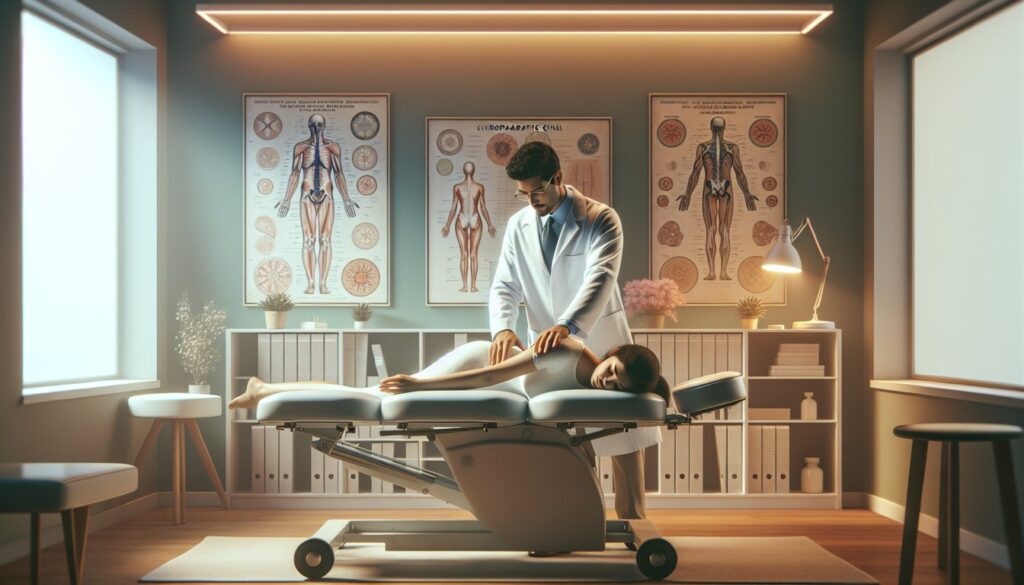Back pain while driving can be a common problem that many people experience. Poor seating positions can contribute to this discomfort and may lead to long-term issues. However, by understanding the impact of improper seating positions, following ergonomic principles, mastering the perfect seating positions, choosing the right car, and implementing certain tips for long drives, you can beat back pain while driving and ensure a more comfortable journey.
Key Takeaways
- Maintain proper posture and adjust the seat height and angle to support the natural curvature of your spine.
- Position the steering wheel and mirrors to minimize strain on your back and neck.
- Use lumbar support and cushions to provide additional comfort and support.
- Find the ideal seat position that allows you to reach the pedals and controls without straining.
- Engage in regular stretching and exercises to strengthen your back muscles and improve flexibility.
WATCH OUR FULL YOUTUBE VIDEO HERE WHERE DR. FORD DEMONSTRATES PROPER SEATING IN THE CAR.
Understanding the Impact of Poor Seating Positions on Back Pain
The Anatomy of the Spine
The spine is a complex structure made up of 33 vertebrae, which are divided into five regions: cervical, thoracic, lumbar, sacral, and coccygeal. Each region has a specific role in supporting the body and allowing for movement. The cervical spine, located in the neck, consists of seven vertebrae and provides flexibility for head movement. The thoracic spine, in the upper back, is connected to the ribs and provides stability. The lumbar spine, in the lower back, bears the weight of the upper body and allows for bending and twisting. The sacral and coccygeal regions are fused and form the base of the spine. Understanding the anatomy of the spine is crucial in preventing and managing back pain while driving.
Common Causes of Back Pain While Driving
Poor seating positions can contribute to back pain while driving. It is important to understand the common causes of back pain to prevent discomfort and injury. Here are some factors that can lead to back pain while driving:
- Slouching: Sitting with a rounded back puts strain on the spine and can lead to muscle imbalances.
- Lack of lumbar support: Without proper support for the lower back, the spine can become misaligned and cause pain.
- Incorrect seat angle: Sitting with the seat angled too far back or too far forward can put stress on the spine.
- Inadequate seat cushioning: A seat with insufficient cushioning can cause pressure points and discomfort.
To avoid back pain while driving, it is important to maintain good posture and use proper seating positions. This includes sitting upright with the back against the seat, adjusting the seat angle to support the natural curve of the spine, and using lumbar support cushions if needed. Taking regular breaks to stretch and move around can also help alleviate back pain during long drives.
The Importance of Proper Seating Positions
Proper seating positions are crucial for preventing back pain while driving. By maintaining correct posture and positioning, you can minimize strain on your spine and reduce the risk of discomfort and injury. Here are some key considerations to keep in mind:
- Seat Height: Adjust the seat height so that your hips are level with or slightly higher than your knees. This helps maintain the natural curve of your spine and promotes good alignment.
- Seat Angle: Tilt the seat angle slightly backward to distribute your weight evenly across the seat and reduce pressure on your lower back.
- Seat Distance: Position the seat at a distance that allows your knees to be slightly bent and your feet to comfortably reach the pedals. Avoid sitting too close to the steering wheel, as it can strain your back and restrict movement.
Tip: Use a lumbar support cushion to provide additional support to your lower back and maintain proper spinal alignment.
Remember, investing time in finding the right seating position can go a long way in preventing back pain during long drives.
Ergonomic Principles for Optimal Seating Positions
Positioning the Steering Wheel and Mirrors
Proper positioning of the steering wheel and mirrors is crucial for maintaining a comfortable and ergonomic driving posture. Here are some key points to consider:
- Steering Wheel Position: Adjust the steering wheel so that your arms are slightly bent and relaxed. Avoid reaching too far or having your arms fully extended, as this can strain your shoulders and upper back.
- Mirror Placement: Position the rearview mirror so that you can see the entire rear window without having to tilt your head. Adjust the side mirrors to eliminate blind spots by maximizing your field of vision.
- Seat Distance: Maintain a comfortable distance between your seat and the steering wheel. You should be able to fully depress the pedals without having to stretch your legs too far or sit too close to the steering wheel.
Remember, proper positioning of the steering wheel and mirrors not only enhances your driving experience but also helps reduce the risk of back pain and discomfort.
Using Lumbar Support and Cushions
Using lumbar support and cushions can greatly improve your seating position and reduce back pain while driving.
- Lumbar support refers to the additional support provided to the lower back region, which is crucial for maintaining proper spinal alignment.
- Placing a lumbar cushion behind your lower back can help fill the gap between the seat and your back, providing extra support and reducing strain on the spine.
- Cushions can also be used to improve overall comfort and reduce pressure points.
Tip: When using lumbar support and cushions, make sure they are properly positioned to provide the right amount of support and avoid excessive pressure on any specific area of your back.
Remember, maintaining good posture and using proper support can make a significant difference in preventing back pain during long drives.
Mastering the Perfect Seating Positions
Finding the Ideal Seat Position
Finding the ideal seat position is crucial for preventing back pain while driving. Here are some tips to help you find the perfect position:
- Adjust the seat height so that your hips are level with or slightly higher than your knees. This helps maintain the natural curve of your spine.
- Position the seat distance so that you can fully depress the pedals without having to stretch or lean forward.
- Recline the seat back slightly to reduce pressure on your lower back. Aim for a comfortable angle that supports your spine.
- Ensure proper headrest placement to support the natural curvature of your neck and prevent strain.
Remember, everyone’s body is different, so it may take some trial and error to find the ideal seat position for you. Take the time to adjust and experiment until you find what works best for your comfort and posture.
Maintaining Proper Posture
Maintaining proper posture while driving is crucial for preventing back pain and discomfort. Here are some key tips to help you maintain good posture:
- Sit up straight with your back against the seat and your shoulders relaxed.
- Adjust the seat height and angle to ensure your knees are slightly higher than your hips.
- Use the headrest to support the natural curve of your neck.
- Keep your hands at the 9 and 3 o’clock positions on the steering wheel.
- Avoid slouching or leaning to one side.
Remember, maintaining proper posture not only reduces the risk of back pain but also improves overall comfort and safety while driving.
Engaging in Regular Stretching and Exercises
Regular stretching and exercises are crucial for maintaining a healthy back while driving. By incorporating these activities into your routine, you can improve flexibility, strengthen muscles, and reduce the risk of back pain. Here are some key points to keep in mind:
- Dynamic stretching before driving can help warm up the muscles and increase blood flow.
- Incorporate exercises that target the core and back muscles, such as pelvic tilts, back extensions, and abdominal crunches.
- Take short breaks during long drives to perform stretching exercises, such as shoulder rolls, neck stretches, and side bends.
- Maintain good posture while performing exercises, keeping the spine aligned and avoiding excessive strain.
Remember, consistency is key when it comes to stretching and exercises. By making them a regular part of your driving routine, you can significantly reduce the risk of back pain and discomfort.
Choosing the Right Car for Back Pain Relief
Considering Car Size and Type
When choosing a car to alleviate back pain, it’s important to consider the size and type of the vehicle. Here are some key factors to keep in mind:
- Size: Opt for a car that provides ample legroom and headroom, allowing you to sit comfortably without feeling cramped.
- Type: Consider a car with a higher seating position, such as an SUV or crossover, as it can provide better support for your back.
Additionally, look for cars that offer adjustable seats and steering columns, allowing you to customize your seating position to suit your needs. Remember, finding the right car size and type can significantly contribute to a more comfortable driving experience and help reduce back pain.
Evaluating Seat Comfort and Adjustability
When evaluating seat comfort and adjustability, there are several factors to consider. Comfort is subjective, so it’s important to find a seat that suits your individual needs. Look for seats that provide adequate cushioning and support for your back. Adjustable features such as seat height, seat angle, and lumbar support can greatly enhance comfort.
In addition to comfort, adjustability is crucial for finding the perfect seating position. Look for seats that offer a wide range of adjustments, including seat position, seatback angle, and headrest position. These adjustments allow you to customize the seat to fit your body and reduce the risk of back pain.
To help you evaluate seat comfort and adjustability, here are some key points to consider:
- Check if the seat provides adequate cushioning and support for your back.
- Test the adjustability of the seat, including seat height, seat angle, and lumbar support.
- Ensure the seat offers a wide range of adjustments, such as seat position, seatback angle, and headrest position.
- Take note of any additional features that may enhance comfort, such as heated seats or massage functions.
Remember, finding a seat that is both comfortable and adjustable is essential for preventing back pain while driving.
Exploring Additional Features for Back Support
When it comes to finding relief from back pain while driving, exploring additional features in your car can make a significant difference. Adjustable lumbar support is a key feature to look for, as it allows you to customize the support to your specific needs. Another important feature is seat heating and cooling, which can help relax muscles and reduce inflammation. Additionally, consider cars with memory foam seats that provide excellent cushioning and support.
In terms of seat adjustability, look for cars with power-adjustable seats that allow you to easily find the most comfortable position. Some cars even offer massage functions in the seats, which can help alleviate tension and promote relaxation. Finally, seat ventilation is a feature worth considering, as it helps keep you cool and comfortable during long drives.
Remember, finding the right car with these additional features can greatly contribute to your overall comfort and help prevent back pain while driving.
Tips for Long Drives without Back Pain
Taking Regular Breaks and Stretching
Taking regular breaks and incorporating stretching exercises into your long drives can help alleviate back pain and improve your overall comfort. Regular breaks allow you to get out of the car, stretch your legs, and give your back a break from the prolonged sitting position. Stretching exercises can help loosen tight muscles, improve flexibility, and reduce the risk of muscle strain or injury. Here are some tips to help you incorporate regular breaks and stretching into your long drives:
- Plan your route to include designated rest stops or scenic areas where you can take breaks.
- Set a reminder on your phone or GPS to prompt you to take breaks every hour or two.
- During breaks, perform simple stretching exercises such as neck rolls, shoulder shrugs, and gentle back bends.
- Take short walks during breaks to increase blood circulation and relieve muscle tension.
- If possible, find a quiet and safe area to do more extensive stretching exercises, such as hamstring stretches, hip flexor stretches, and spinal twists.
Remember, taking regular breaks and incorporating stretching exercises can make a significant difference in reducing back pain and discomfort during long drives.
Using Heat or Cold Therapy
Heat and cold therapy can be effective in relieving back pain while driving.
- Heat therapy can help relax muscles and increase blood flow to the affected area. It can be applied using a heating pad, hot water bottle, or warm towel. Be sure to use a barrier, such as a cloth or towel, between the heat source and your skin to prevent burns.
- Cold therapy can help reduce inflammation and numb the area, providing temporary pain relief. You can apply a cold pack, ice pack, or even a bag of frozen vegetables wrapped in a cloth to the affected area. Remember to limit the application to 20 minutes at a time to avoid skin damage.
It’s important to note that heat therapy is generally recommended for chronic pain, while cold therapy is more suitable for acute pain or recent injuries. Consult with a healthcare professional to determine which therapy is best for your specific condition.
Tip: Experiment with both heat and cold therapy to find out which one works best for you. Some people find alternating between the two can provide even greater relief.
Implementing Relaxation Techniques
Relaxation techniques can be highly effective in reducing back pain and promoting overall well-being. By incorporating these techniques into your driving routine, you can alleviate tension and discomfort in your back. Here are some simple relaxation techniques to try:
- Deep breathing: Take slow, deep breaths, focusing on filling your lungs completely and then exhaling slowly. This can help relax your muscles and reduce stress.
- Progressive muscle relaxation: Start by tensing and then releasing each muscle group in your body, from your toes to your head. This technique can help release tension and promote relaxation.
- Visualization: Close your eyes and imagine yourself in a peaceful and calming environment. Visualize yourself free from pain and tension, allowing your mind and body to relax.
Remember, incorporating relaxation techniques into your driving routine can help reduce back pain and promote a more enjoyable and comfortable driving experience.
Conclusion
Back pain while driving can be a common problem that many people face. Understanding the impact of poor seating positions on back pain is crucial in order to find relief and prevent further discomfort. By following ergonomic principles for optimal seating positions, such as adjusting the seat height and angle, positioning the steering wheel and mirrors correctly, and using lumbar support and cushions, drivers can significantly reduce the risk of back pain.
Mastering the perfect seating positions involves finding the ideal seat position, maintaining proper posture, and engaging in regular stretching and exercises. Additionally, choosing the right car that offers back pain relief features, considering car size and type, evaluating seat comfort and adjustability, and exploring additional features for back support can also contribute to a more comfortable driving experience. Lastly, implementing tips for long drives without back pain, such as taking regular breaks and stretching, using heat or cold therapy, and practicing relaxation techniques, can further alleviate discomfort. By prioritizing proper seating positions and incorporating these strategies, drivers can beat back pain while driving and enjoy a more comfortable and pain-free journey.
Choosing Ford Chiropractic for your back needs is a wise decision. With a team of highly skilled and experienced chiropractors, Ford Chiropractic offers top-notch care tailored to your specific requirements. Whether you are seeking relief from back pain, improving your overall spinal health, or enhancing your athletic performance, Ford Chiropractic has got you covered. Their comprehensive approach combines cutting-edge techniques, state-of-the-art equipment, and a patient-centered approach to ensure that you receive the best possible care. Don’t let back issues hold you back any longer; choose Ford Chiropractic and experience the difference in your well-being.
Frequently Asked Questions
What are the common causes of back pain while driving?
Common causes of back pain while driving include poor posture, inadequate lumbar support, vibration from the vehicle, and prolonged sitting without breaks.
How can I adjust the seat height and angle for optimal seating positions?
To adjust the seat height, use the lever located on the side of the seat. To adjust the seat angle, use the lever located beneath the front of the seat.
What is the ideal seat position for preventing back pain?
The ideal seat position is one where your knees are slightly bent, your feet can comfortably reach the pedals, and your back is fully supported by the seat.
Should I use lumbar support and cushions while driving?
Yes, using lumbar support and cushions can help maintain the natural curvature of your spine and provide additional comfort and support.
How often should I take breaks and stretch during long drives?
It is recommended to take breaks and stretch every 1-2 hours during long drives to relieve muscle tension and improve blood circulation.
Are there any relaxation techniques I can use to reduce back pain while driving?
Yes, deep breathing exercises, progressive muscle relaxation, and visualization techniques can help relax the muscles and alleviate back pain while driving.






